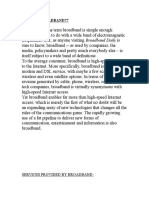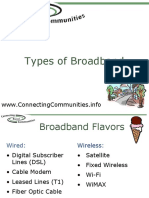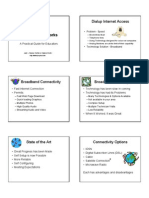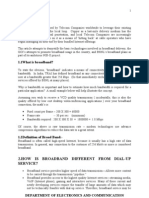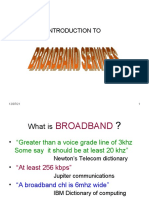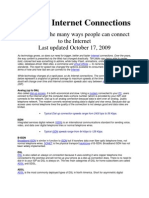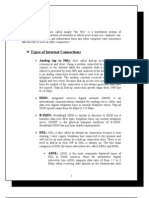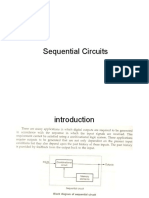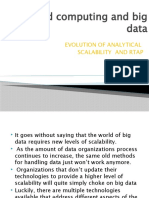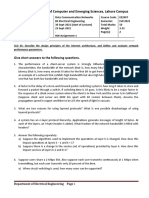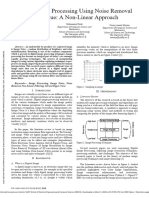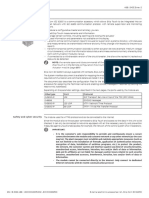0% found this document useful (0 votes)
127 views16 pagesBroadband - What Is It?
Broadband refers to high-speed internet access that allows for reliable transmission of data, voice, and video. The FCC defines broadband as internet speeds of at least 25 Mbps for downloading and 3 Mbps for uploading. Broadband is delivered through various technologies including cable, DSL, fiber optic, wireless, satellite, and more. It provides economic and social benefits by enabling new industries, improving education, healthcare, public safety, and more.
Uploaded by
soqylio mcbarCopyright
© © All Rights Reserved
We take content rights seriously. If you suspect this is your content, claim it here.
Available Formats
Download as PDF, TXT or read online on Scribd
0% found this document useful (0 votes)
127 views16 pagesBroadband - What Is It?
Broadband refers to high-speed internet access that allows for reliable transmission of data, voice, and video. The FCC defines broadband as internet speeds of at least 25 Mbps for downloading and 3 Mbps for uploading. Broadband is delivered through various technologies including cable, DSL, fiber optic, wireless, satellite, and more. It provides economic and social benefits by enabling new industries, improving education, healthcare, public safety, and more.
Uploaded by
soqylio mcbarCopyright
© © All Rights Reserved
We take content rights seriously. If you suspect this is your content, claim it here.
Available Formats
Download as PDF, TXT or read online on Scribd
/ 16











